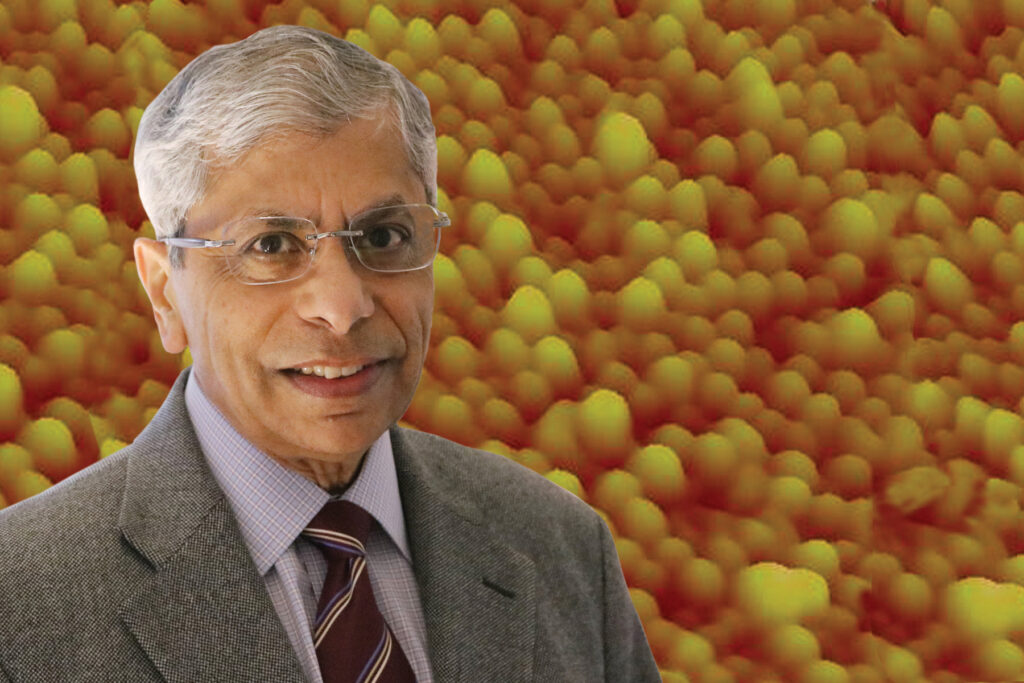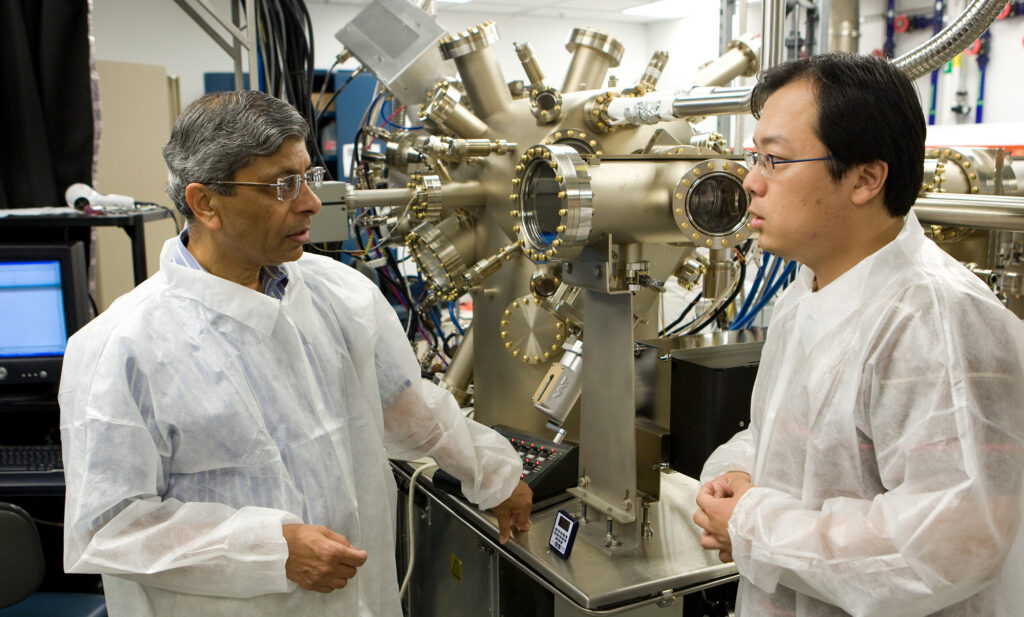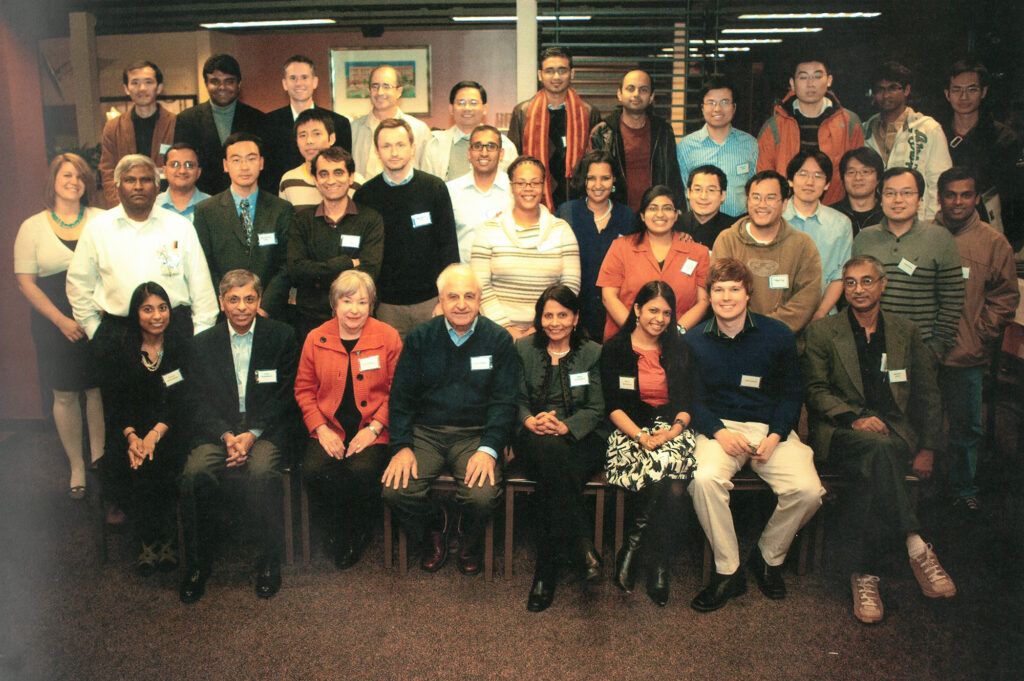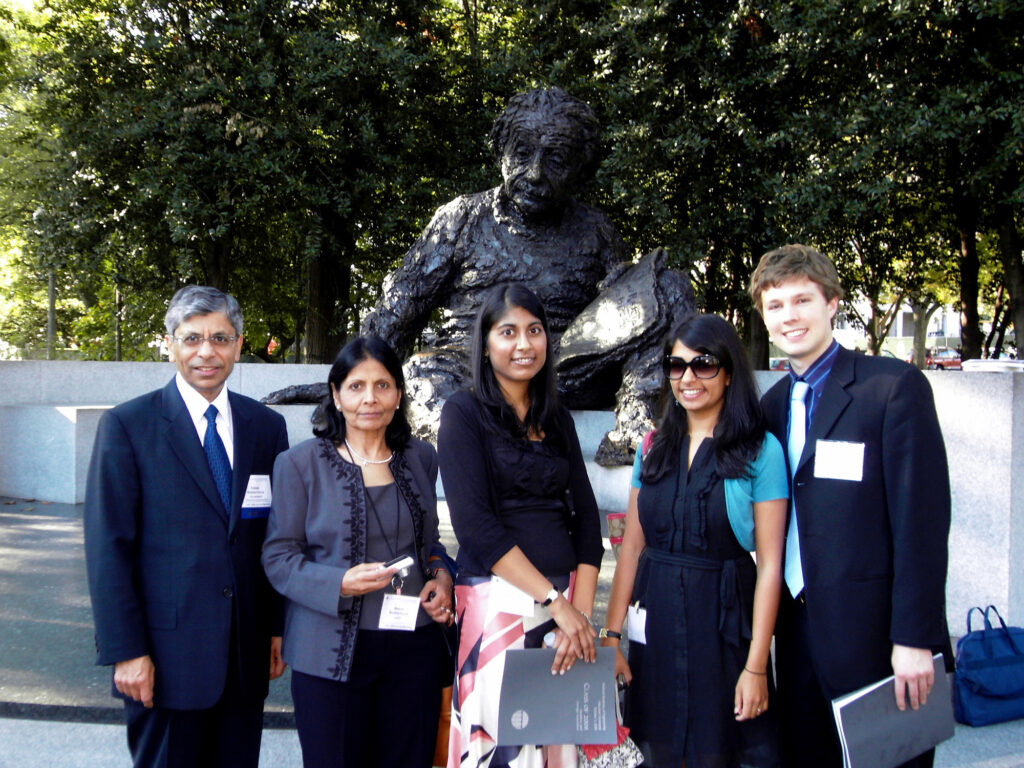Pallab Bhattacharya retires, leaving a rich legacy of optoelectronics research and teaching

Professor Pallab Bhattacharya began his career at the University of Michigan on January 1, 1984, after having been an assistant professor at Oregon State University since 1978 and an associate professor since 1982. He hit the ground running, and has scarcely taken time to catch his breath in the 40 years since he arrived as an associate professor. After officially retiring January 1, 2024, Bhattacharya will continue to work on a few research projects.
Professor Bhattacharya initiated research and teaching in optoelectronics and established extensive experimental facilities, including those for semiconductor epitaxy with a technique known as molecular beam epitaxy (MBE). These MBE facilities were the first of their kind to enable the epitaxial growth of a wide range of state-of-the-art elemental and compound semiconductor materials and device heterostructures, including those with quantum confinement, at the University of Michigan.
He has been a renowned leader in the development and commercialization of quantum dot lasers and devices, for a wide range of applications, following his group’s discovery of the self-organized formation of quantum dots in strained channel heterostructure transistors in 1988, and the subsequent demonstration of room temperature operation of a quantum dot laser.

He has also pioneered technological advances in synthetically modulated semiconductor structures, nanowire and nanophotonic devices, and other optoelectronic device and integrated circuit developments. His group demonstrated the first semiconductor based spin valve, spin amplifier, and an electrically injected spin laser and spin polariton laser. His group was also the first to report quantum dot lasers emitting in the entire visible wavelength range, with III-nitride heterostructures.
He described his professional journey in a lecture in 2017 as part of the Materials at Michigan Symposium.
A prolific researcher, Prof. Bhattacharya has disseminated his group’s research results in over 1,000 archival journal articles and plenary, invited and contributed conference presentations, and authored three U.S. patents.
He graduated 81 Ph.D. students, many of whom are leaders in industry and academia around the world; they are even represented in the United Nations. One of his most often-repeated comments both publicly and privately has been, “I have been blessed throughout my career to have the most dedicated doctoral students to work with me.”
Professor Bhattacharya introduced four undergraduate and graduate courses in the area of semiconductor devices, lasers and light emitting diodes. He authored the influential textbook Semiconductor Optoelectronic Devices, which is now in its second edition and has been used worldwide for over 30 years. He has edited and co-authored the widely used Properties of Lattice Matched and Strained InGaAs and Properties of III-V Quantum Wells and Superlattices. He is also co-Editor-in-Chief and co-author of the six-volume Comprehensive Semiconductor Science and Technology.
Within the department, Prof. Bhattacharya was Director of the Solid State Electronics Laboratory (1991-98) and the Center for Nanoscale Photonics and Spintronics (2010-16). He served as Director of the Multidisciplinary University Research Initiative (MURI) Center on Adaptive Optoelectronic Eye (1998-2003), and the MURI Center for Research on Infrared Detectors (2001-2006), and he led significant efforts in the MURI Center on Integration of Spin Polarized Quantum Dots with Bacteriorhodopsin-based Optical Devices (1999-2004), the DARPA Center on Optoelectronic Science and Technology (1994-98,) and the NSF Materials Research Science and Engineering Center (MRSEC) for Photonic and Multiscale Nanomaterials (2011-17).
He has chaired numerous conferences, workshops, and committees for the professional community, and served as Editor of IEEE Transactions on Electron Devices and as Editor-in-Chief of Journal of Physics (D): Applied Physics.
Professor Bhattacharya was named James R. Mellor Professor of Engineering in 1999, and the Charles M. Vest Distinguished University Professor in 2004. His university awards include the U-M Distinguished Faculty Achievement Award, the College of Engineering S.S. Attwood Award and Ted Kennedy Family Team Excellence Award, and from Oregon State University, the L.L. Stewart Award.
Former graduate students of Prof. Bhattacharya organized a symposium in honor of his 60th birthday in 2009. Called Frontiers in Semiconductor Based Devices Symposium, it was attended by many of his former students, colleagues, and family.

He received an Honorary Doctor of Engineering degree from the University of Sheffield, United Kingdom, in 2015 “to recognize a distinguished career in the field of compound semiconductors,” and a John Simon Guggenheim Fellowship in 1998. He received the IEEE Jun-ichi Nishizawa Medal (2019) “for contributions to the development and commercialization of quantum dot lasers,” the Molecular Beam Epitaxy Innovator Award (2018) “for fundamental contributions to molecular beam epitaxy of quantum confined and nanoscale heterostructures and optoelectronic devices realized with them,” the IEEE David Sarnoff Award (2015), the Heinrich Welker Medal (2010), the TMS John Bardeen Award (2008), the IEEE Nanotechnology Pioneer Award (2007), the Optica Nick Holonyak Jr. Award (2002), the IEEE (LEOS) Engineering Achievement Award (2000), a SPIE Technology Achievement Award (2000), and an IEEE EDS Paul Rappaport Award (1999). He has also served as an IEEE LEOS Distinguished Lecturer.

Professor Bhattacharya is a Fellow of IEEE, the American Physical Society, Optica (formerly the Optical Society of America), the Institute of Physics (UK), and the National Academy of Inventors. He was elected a member of the National Academy of Engineering, “For contributions to quantum dot optoelectronic devices and integrated optoelectronics.”
 MENU
MENU 
